Overview

Personal Project
Scophophobia


PC & VR

2

6 months
Tasks & Responsibilities
-
Technical Game Design
-
Multiplayer Integration
-
VR Integration
-
Character Movement & Abilities
-
Sound & UI Design
-
-
General Game Design
-
Documentation & Project Management
-
Overall Game Balance & Quality Assurance
-
-
Level Design
-
Floor Planning
-
Designed 1 map, using modular assets & props
-
-
Storytelling & Character Backstory
-
Live Playtest with more than 20 people
Scopophobia - Gameplay Trailer
Scopophobia is a PvP VR survival horror game, with up to two players. This project is developed to work locally on one PC for both the PC and VR player. More specifically, one player moves its character through a VR headset, and its controller, while the second through the mouse and keyboard, simultaneously on the same device.
The game was developed in Unity Engine for VR and PC platforms, using Oculus Integration. The main goal for this project is to entertain two players who sit side by side and switch roles between each round, in order to feel both the tension VR technology can offer.
This project was developed during my second year at SAE Athens Institute, in 6 months, with a team of 2 developers.
Technical Game Design
Multiplayer Integration
As mentioned above, this project tries to bring back friendly couch gaming, as it is aimed at a specific audience of gamers who own a VR headset and enjoy horror games. Instead of setting up server rooms and networking integrations, like previous projects, as a team for this project, we wanted to create a local experience for two players on the same device.
In order to do that, we developed two different characters, each one with their own input systems based on the device they are playing on. The main problem with this integration was that the rendering of the game scene was run two times, instead of one, for VR and PC respectively. This issue created a much bigger need for better optimization and constant iterations to achieve the best result possible.
Eventually, as it was our first game developed in a 3D space with VR technology, with researching for the best optimizations practices within the Unity 3D Engine, we managed to run the game for all medium to high-end PC platforms.


(1) PC Player model used in T-pose (found in Mixamo) - (2) VR Player model used in T-pose (found in Sketchfab)
VR Integration
The VR player's objective for this game is to explore the map, find and obtain three randomly placed objects, for each round and escape from the area. These objects generate a Geiger sound which is increased as players are getting close to them, indicating their estimated position. On top of the exploration, VR players have to face the VR player by either avoiding them or using a flashlight which has an area of effect, immobilizing them that way, as soon as the PC player enters that area.
By utilizing both Oculus and SteamVR Integration in Unity 3D Engine, I ensured a fast-paced development and compatibility with a wide range of VR devices, including Oculus headsets and SteamVR compatible devices like HTC Vive and Valve Index. This decision allowed it to reach a larger audience of VR players.
Lastly, another challenge was to implement Inversed Kinematics (IK) for the VR player's movements, which added immersion and realism by accurately animating the player's arms and legs. This implementation ensured that the VR player's movements were natural and responsive, contributing to the overall sense of presence within the level.
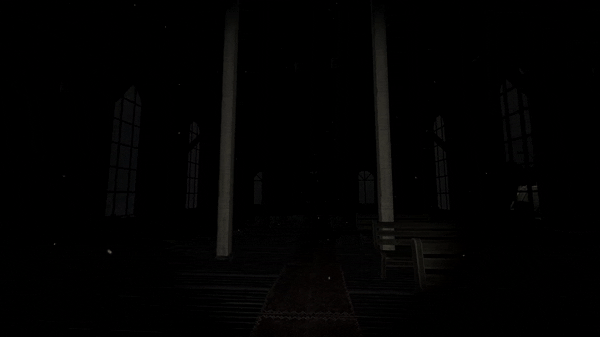
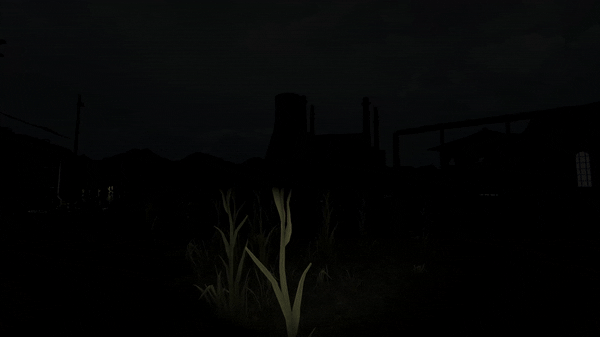
Example of VR player's movement
PC Character Movement & Abilities
In addition, the PC player's object is to find and thus neutralize the VR player, as well as create a terrifying experience for the opponent. To create the character for the PC player, I used animations through Mixamo and imported them into Unity Engine. The states for the PC players include Idle, Walking, Running, Crouch, Crouch Walking, Jump, Vault and Attack. Furthermore, players are able to interact with objects such as branches or stones, in order to distract the opponent.
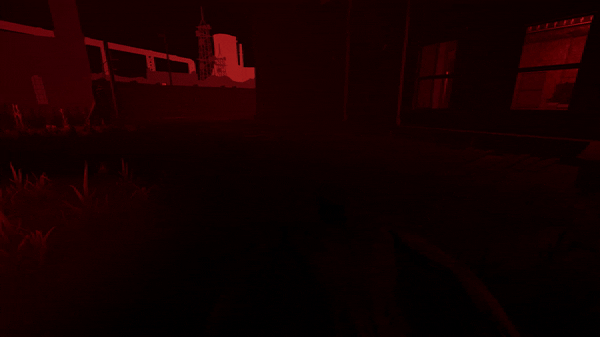
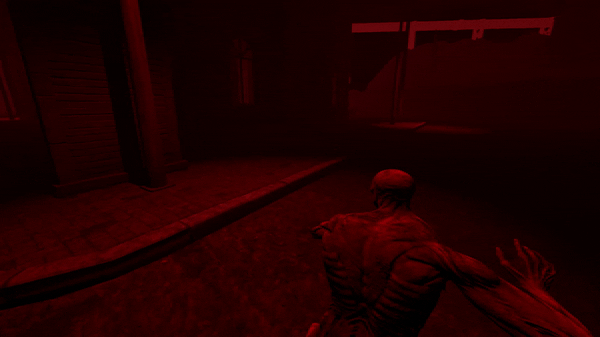
(1) Example of PC player's default movement - (2) Example of PC player's crouch movement
Lastly, after some different iterations, we decided as a team to include more depth to the game, as the time allowed it. More specifically, we implemented different abilities with various cooldowns for each one. These abilities can distract, assist, scare or increase the character's attributes in certain circumstances.

Jumpscare Ability: PC Players are generating an anthropoid clone in front of the VR player

Stamina Enhance: PC Players refill their stamina bar instantly

Predator Mode: PC Players increase their running speed for 10 seconds.

Sound Enhance: PC Players increase VR's output audio for 20 seconds
Sound & UI Design
Like any other horror entertainment medium, special emphasis was placed on the sound design of the game, for the best player experience possible. For the Main Menu of the game, we used a royalty free soundtrack, to create tension and set the right mood for the very beginning. However, we decided not to include any type of music in the Game Scene, in order to avoid any distraction for the VR players. Instead, we used various SFX for footsteps on different surfaces, like wood, mud and grass, as well as different actions including movement, jumpscares and interactions with objects. Furthermore, I used the Audio Mixer and coding to create different ambience sounds in the interior and the exterior areas of the map, depending on each area the players were. These SFX include wind and foliage for the exterior, as well as wood cracks and echoes for the interior.
In terms of the UI, other than the necessary icons for the PC player's abilities, I created the Main Menu buttons and logic, which included different sections for starting the game and "How to Play", as well as the logo of the game. . Furthermore, I created a stamina bar element and implemented it for the needs of the player's movement. All the above elements were created using Photoshop.
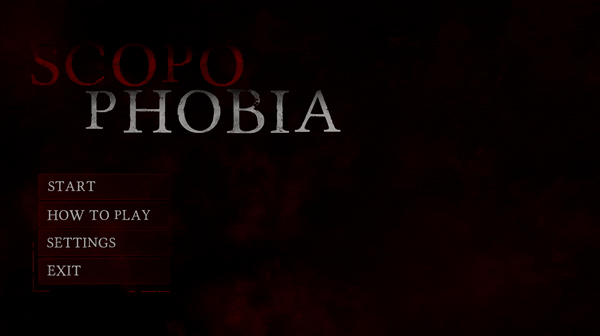
Main Menu overview


(1) Controls Menu section - (2) How to Play section
General Game Design
Documentation & Project Management
To deliver a high quality game, I created a Game Design Document (GDD) that outlined the concept, the gameplay mechanics and the overall vision of the project. Even though the game was developed by two people, it provided a clear reference point for the entire time, ensuring that way everyone was aligned with the project goals and direction.
By utilizing Trello boards, we were able to break down the development process into manageable tasks, assign responsibilities to each other and monitor the status of each task in real time. On top of that, we established a roadmap for the development process, which allowed us to prioritize the necessary tasks, but also track progress against predetermined milestones. Lastly, by leveraging GitHub, we implemented a structured approach to managing changes to the game's code, assets and other project files. This allowed us to track effectively various iterations, revert to previous versions and overall collaborate seamlessly.
Overall Game Balance & Quality Assurance
Throughout the development process, we continuously playtested the game internally. That way, we identified critical issues, but also adjusted and added various gameplay elements, including the player's abilities and overall feel of the game. All the above were maintained by the Trello Board of the project and prioritized afterward. Lastly, it is worth mentioning that due to the nature of the project, in order to balance the game, at the later stages of the development, we ran external playtests on-site with people of different gaming backgrounds, to make it as much enjoyable as possible for a wider audience of players.
Level Design
Scopophobia takes place in a post-apocalyptic environment which has been destroyed by a nuclear explosion. The game is set in a ghost town as no trace of life has been found since the event took place. Knowing this, the protagonist of the game (VR player), is a scientist who has dedicated his life to research, in order to avoid similar situations for humanity. Thus, he has to visit this city, in order to find and acquire rare objects that were created after the explosion.

Overview of an opened field and an abandoned mansion in-game
In this project, I used modular assets for the Unity Asset Store, which allowed me to efficiently create detailed and varied places within a main map for the game. These assets matched the post-apocalyptic theme of the game and included different areas like abandoned mansions, the nuclear factory which was visible far away from the players' perspective, village areas and open fields. The inclusion of these diverse environments added depth and variety to the gameplay experience, offering players a range of settings to navigate.
Another decision we made was to incorporate both exterior and interior areas within the game map. Exterior areas such as open fields and abandoned streets provided open spaces for traversal and potential ambushes, while interior areas such as the abandoned mansions offered tighter and more claustrophobic environments that heightened the tension and suspense. Lastly, by including areas with cover, line of sight blockers and chokepoints encouraged tactical positioning and strategic decisions for both offensive and defensive opportunities.
Overall, the level design of Scopophobia is crafted to support the game's thematic elements and gameplay mechanics by leveraging modular assets, incorporating diverse environments and balancing combat opportunities, inviting in that way the players to immerse themselves in its post-apocalyptic setting.
A pack of in-game images for the game showcase